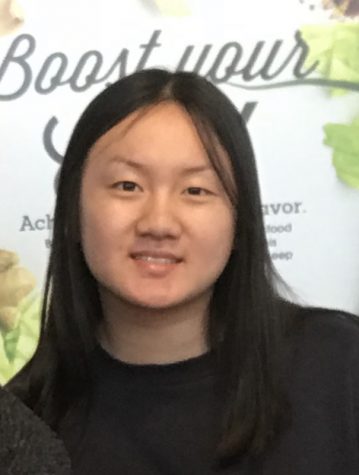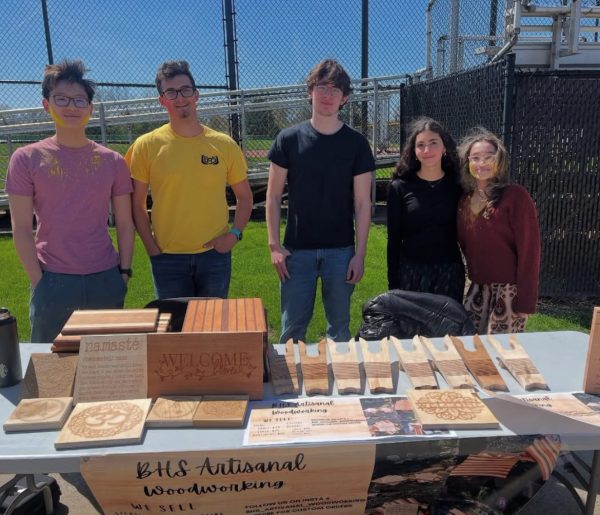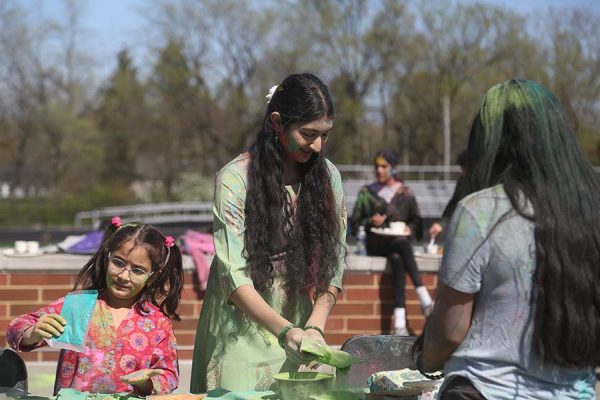Human Rights Students Make a Difference With ‘Choosing to Participate’ Projects
Students from the human rights class ended their semester by displaying their Choosing to Participate (CTP) projects throughout the week of Jan. 8.
The projects encourage students to engage in their communities and raise awareness about subjects they are passionate about. The projects have been part of the course for almost 20 years.
Students set up their projects in the hallway outside of the cafeteria and included a wide range of topics, such as recycling, food drives and various pledges.
This year was social studies teacher Pam Ogilvy’s first time teaching the course. According to Ogilvy, the purpose of the CTP projects is to show students that they have a voice.
“Often times I think that kids don’t realize that their voice matters, but when you put a whole bunch of voices together it can make change and that’s really the goal,” she said.
“Their personal choices can have a great effect,” she added.
Students chose their own topics.
“I think that when kids get to pick what they’re interested in, there’s a lot more drive to be successful,” Ogilvy said. “I always try to reinforce the idea that if you don’t care about it, nobody else is going to care about it, so [you should] find something that matters to you and work towards that, towards raising awareness.”
One of the CTP projects focused on raising awareness about sexual assault.
Sophomore Shannon O’Neil, a co-creator of the project, said she was inspired that a lot of people have come out about their experiences lately.
“I don’t feel like [sexual assault] is really covered in your typical sex-ed classes,” O’Neil said. “They don’t talk about consent, they don’t talk about the fact that when someone doesn’t want to do something, you have to let them be.”
“It’s an uncomfortable topic, and so it seems that a lot of people tend to avoid it, but it needs to be talked about,” she added.
Another CTP project called BHS Destress enforced the idea of mental health, providing different resources to help the community destress.
“We did research about how stress affects your body, how lack of sleep affects your body, and why it’s so important to take care of yourself emotionally and physically,” junior Orly Einhorn said. “We gathered strategies for how to handle stress in a healthy way, and then because you can’t really force [people to destress], we decided to just make these options available for people in their classrooms.”
Besides a list of coping skills, the group also handed out bracelets to serve as reminders for students to take care of themselves.
Boxes containing stress balls and worry stones were given to teachers to have in their classrooms as another option for students to destress.
“People have been really receptive to the boxes in their classrooms,” Einhorn said. “I think people are happy with them because they like to have those options in the classrooms … The teachers were also grateful when we brought them, so I think people are appreciating that part of it.”
Another project created by senior Blair Mitchell aimed to raise awareness about the misrepresentation of pitbulls in the media.
Mitchell chose to pursue this subject because some of her family members own and breed pitbulls, and they receive a lot of backlash from those who assume their dogs are violent.
“Hopefully [my project can] change some people’s opinions about [pitbulls] because there is a lot of false information going around,” Mitchell said.
Mitchell’s project displayed pitbulls’ risk scores, which are actually among the lowest for the strong breeds, a fact that surprised many students.
“I think that the importance of [doing CTP projects] is to erase negative stigmas behind common ideas in the media and things that are perpetuated with no real backing,” she said. “There’s a lot of spreading of information [that is not accurate], so I think that when we do these projects and show the actual facts and statistics, it allows them to make up their own minds.”
Throughout the week, students wore wristbands, buttons, pins and bracelets to show their support for the various CTP projects.
“It’s nice to see kids that I don’t teach wearing these things,” Ogilvy said. “Each project may not affect every single kid, but if you affect one kid that’s really what matters.”
“We’re all doing different things, but if we’re all working on one different aspect of making our school a better place, then at the end of the day our school is going to be even better for it,” Einhorn said.
“If everyone is choosing to participate, then our school is going to be that much better,” she added.

Vivian Li began writing for the Beachcomber in 2016. She covers various news and feature stories in BHS and the community. In addition to writing for the...













